Every woman struggles with hair loss at some point in their lives. Those who don’t, who are you? Are you even from this planet?
Anyways, those of us who don’t know what is causing our hair to shed substantially, I am here to tell you that I may have the answer! Now, even though the reasons for hair loss are many, sometimes it could be as simple as what your go-to hairstyle is.
For example, tight braids cause hair loss if you are choosing to sport that hairstyle for long periods of time in a day, every day of the week! This type of hair loss is a result of ‘traction’ but the good news is that you can fix traction alopecia naturally!
If you are wondering what the heck I am talking about, stick around. I promise I will explain all the questions you may have about how certain hairstyles can cause hair loss and how to wear your hair instead.
Growing your hair back is also possible! My favorite hair growth product that spot-treats affected areas and is absolutely cruelty & drug-free is the Precision Hair Growth Serum by Kerotin.
Tight Braids Cause Hair Loss
Who remembers a time when their friends or family would return from a warm vacation destination with their hair in tight braids that made them look like they were Amazonian royalty?
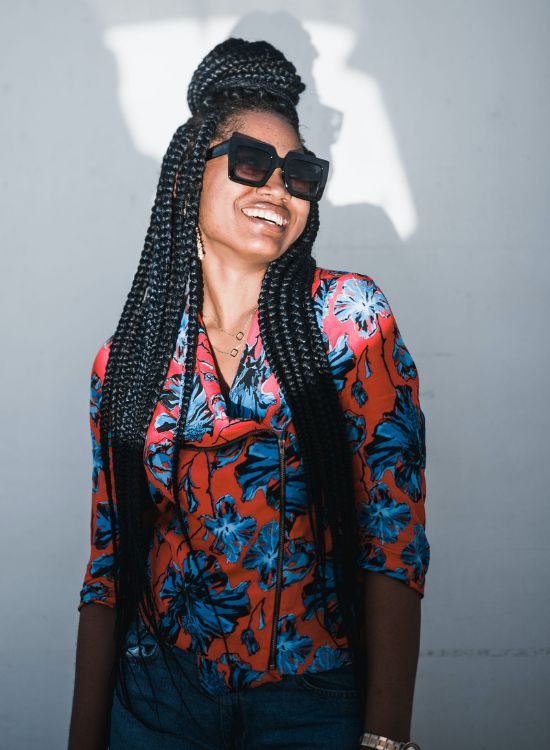
It is undeniable how beautiful it looks to have neat and clean braids like that. Needless to say, you don’t have to worry about how to wear your hair differently each day either, once you have these braids “installed”. Also, they do a damn good job in keeping the hair away from the face!
The braids don’t just look great on women but men too and we often see our favorite celebrities, especially in the sports or music industry, opting for this hairstyle.
But as the old adage goes, beauty comes with a cost. Guess what that cost is? Yup, you guessed it right: hair loss!
As fantastic as they look, these braids or cornrows can easily trigger a migraine, cause hair thinning around the edges and also cause scalp sores and tiny bumps on and around the hairline.
Now don’t get me wrong; there are a million ways to do braids with your hair and not all of them cause hair loss. I am only talking about the ones that are super tight as they cause a type of hair loss that is called traction alopecia.
What Is Traction Alopecia?
Traction alopecia is hair loss that occurs from hair being pulled back too tightly for long periods of time. People who experience this kind of hair loss or hair thinning often wear their hair in styles that require aggressive hair pulling and harmful strain on the scalp.
These kinds of tight hairstyles damage and destroy the hair follicles from which the hair grows. In certain cases, the follicles are so inflamed (folliculitis) or scarred that new hair growth is not possible.
Missing Hair or Pushed Back Hairline
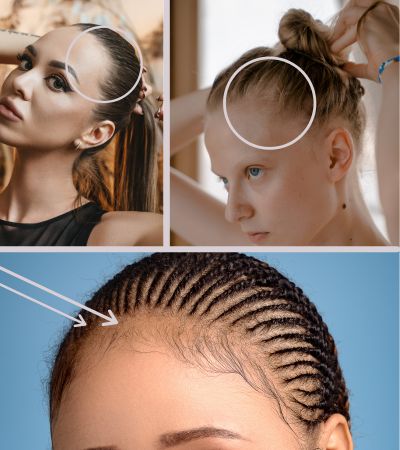
In early stages, traction alopecia can present itself by small little bumps that look like pimples across the hairline or upper forehead areas. As the condition progresses, these bumps could get bigger or turn into sores that are as painful as they look!
You could also see patches of redness on your scalp where the hair is being pulled and irritation and tenderness can also occur on those areas on the scalp.
Some hair can appear to be missing or broken. Usually, the hairs along the front and sides of your scalp are most affected. However, depending on how you usually wear your hair, you could see hair thinning on other areas of your scalp as well.
The most differentiating factor in determining traction alopecia from other kinds of alopecia is that it only affects the hair that is being pulled. In other types, hair loss is seen in patches on different areas of the scalp.
Types of Hairstyles That Cause Traction Alopecia
Traction alopecia is not limited to just braids. Any hairstyle that tugs and pulls the hair too tightly for extended periods of time can result in hair loss or hair thinning.
This could also include hair that is chemically processed and/or over-exposed to heat. The chemicals and extreme heat exposure can damage your hair, making it weak and easy to break mid-shaft or right from the follicle.
Let’s look at what types of hairstyles these could be, in case you are wondering.
Tight Braids (Cornrows, Dreadlocks, etc)
Cornrows are super tight braids that are very close to the scalp causing direct pull on every hair follicle. Dreads are clumps of hair matted together by rolling, braiding, and backcombing hair to look like rope. These styles are difficult to loosen, cause a lot of scalp tension, and they keep hair in the same shape for long periods of time.
Weaves, Extensions & Wigs
There is nothing wrong with having weaves, hair extensions and/or wearing wigs to make your hair look longer or fuller. However, having these in your hair for a long duration negatively impacts your hair and scalp health. This is because they are glued or tightly tied to the base of the hair, causing a great deal of tension at the roots.
Topknots (Ballerina/ Gymnastics Buns)
Wearing your hair in a high ballerina bun gives a super polished, neat, and classy look, no doubt. However, sporting this look “errr-day, ALL day” even if it is for the gym causes a lot of stress to the scalp and can even result in severe headaches. A receding hairline can easily develop as a result of this type of hairstyle.
High Ponytails
Ponytails are most commonly everyone’s go-to hairstyle as they are easy, convenient and look great. Hair pulled tightly at the crown of your head in a high ponytail every day causes a lot of stress on your hairline, including the nape of your neck. This is because the entire weight of your hair rests at the top of your head. If you have longer and heavier hair, the “pull” is even more aggressive.
Overnight Rollers
Some women prefer to sleep with rollers in their hair to achieve the desired curls for the next day. As uncomfortable as they are to sleep in, these rollers cause a lot of friction between hair fibers and your cotton pillowcases. The constant tug & pull of your hair while you switch positions as you sleep through the night are enough to break hair and pull them out of the roots as well.
Chemical Treatments
Any hair treatment that chemically changes the shape of the hair is more than likely to cause hair loss. This includes hair relaxers, keratin treatments, and even perms as each of these involve coating the hair with a strong chemical, followed by intense heat to activate that formula in order to permanently change the structure and texture of the hair shaft.
Can Traction Alopecia Be Reversed?
I have good news for you: Yes, traction alopecia can actually be reversed if you simply stop pulling your hair back in tight hairstyles. The important thing to note here is that you must intervene as soon as you see the first signs; otherwise, hair loss may be permanent.
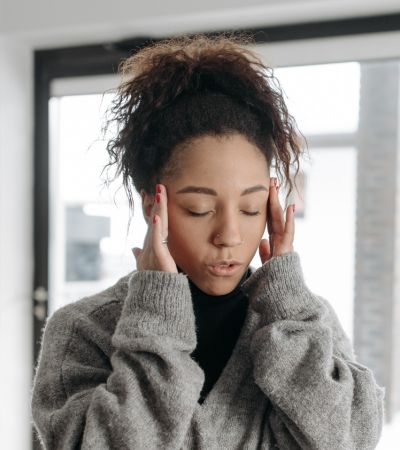
But how do you know if a braid is “too tight”? That’s pretty simple: if your braid (or any choice of hairstyle) hurts, it is TOO tight. If you are constantly struggling with a headache that just doesn’t go away; it is most likely that your hairstyle is too tight. Loosen up the hairstyle so that it does not hurt anymore.
Tips To Remember
If you must wear cornrows or dreadlocks, ensure that you opt for wider or thicker braids as opposed to thinner ones as they are less strenuous on the scalp. You could even choose a twisted-rope style braid.
Watch your hairline or scalp for tiny pimples or redness and apply antibiotic/anti-inflammatory creams right away to prevent infections and soothe the swelling.
Taking the necessary precautions early on such as the above can allow your hair to grow back. However, keep in mind that recovery takes time and it could take anywhere from 3-9 months to see any improvement. This is because you have to rebuild the hair follicle after it has been scarred from repeated pulling of hair.
If these tips don’t work to grow your hair back, consult a trichologist– a doctor that studies the scalp and hair. They will examine your scalp and prescribe the right kind of medications or treatments.
How To “Fix” Traction Alopecia Naturally?
Why spend a fortune on hair transplants or other surgeries and medications to fix traction alopecia when there are natural methods you can first try? Here are a few of my suggestions based on the information I have gathered in my research on the said topic.
1. Wear Your Hair Down
The best way to fix hair loss from traction alopecia is to simply wear your hair down or in a loose, low ponytail. This ensures that there is no tug or excessive pull on your roots and allows your scalp to naturally breathe. The key is to eliminate tension or any kind of traction to the roots. Let your hair flow freely!
2. Switch Up Your Hairstyles
Realistically, it is impossible to always wear your hair down. But it is absolutely possible to alternate your hairstyles often. Change hairstyles every few weeks to prevent scalp strain in the same area every time. Remove braids, cornrows, and dreadlocks every 4-6 weeks and wear weaves or extensions for shorter periods of time with breaks in between each use.
3. Choose Gentle Hair Accessories
Choose hair accessories that don’t pull or stick to the hair. Refrain from using hairbands that are too tight on your head. Use gentle hair ties like silk or satin barrettes and bonnets. Rubber or elastic bands to hold your hair in place can pull out more of your hair as you remove them. Similarly, avoid using too many hair pins as they can also lead to hair breakage.
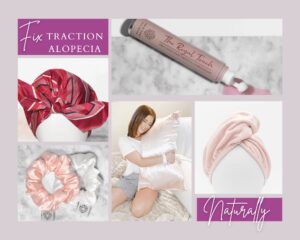
4. No Sleeping With Tied-Up Hair
Tying your hair while you sleep makes it more tangled and knotted. Your hair tie restricts hair from freely moving while you sleep. Cotton pillowcases cause friction between the hair fibers that results in frizzy hair with split-ends. Wrap your hair with a sleep cap and sleep on mulberry silk pillowcases as they prevent any kind of inadvertent hair-pulling while keeping your hair off your face.
5. Upgrade Your Hair Care
Avoid chemically processing your hair and applying heat, especially if you wear your hair in weaves or braids. Use sulfate-free shampoos as they protect the scalp and reduce hair damage. Limit your use of hair styling products like creams, serums, sprays, etc to avoid product buildup. Keep your blow dryer or flat iron on low settings if you must use heat. Do not tie or style or brush wet hair aggressively.
Related Posts: Do check out the other posts in my category labelled Haircare Routines where you can find more hair care tips like how to dry hair after shower, the proper way to wash hair, and how often to wash hair.
6. Massage Your Scalp Regularly
Since your hairline is most affected, it is crucial to massage that area regularly to boost the blood circulation and ease out the tension on the scalp. You could use hair growth drops that nourish hair follicles with essential nutrients to support the growth of healthier hair. Alternatively, you could use carrier oils to repair hair mixed in with essential oils to massage and grow back your hairline.
Here is what I would highly recommend to fix traction alopecia naturally:
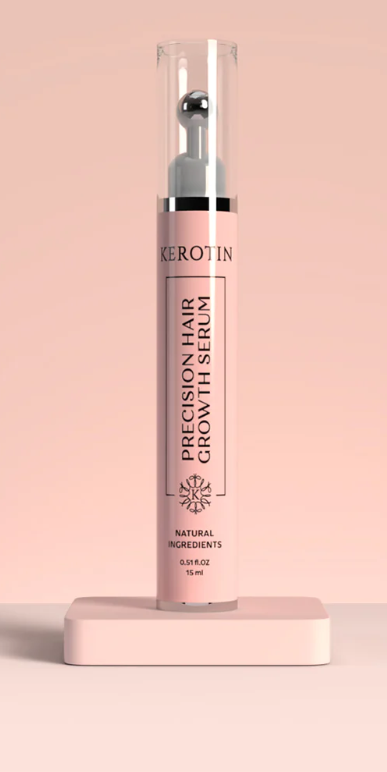
The Precision Hair Growth Serum by Kerotin
This powerful serum is a completely natural way to help recover lost hair and give a boost of growth to problem areas caused by traction alopecia. It has an easy-to-use spot applicator for localized treatment and can be used daily!
My discount code for 15% off (SASHA4) is already added at checkout if you use the link below:
Hairstyles That Promote Hair Growth
There are hairstyles that could ‘protect’ your hair in a way so that your hair can grow naturally. These are called protective hairstyles because they allow the hair to rest comfortably without the external help of pins, clips, or other enclosures that may damage the hair.

The hairstyles below involve securing the ends of your hair in a loose twist, braid or even a gentle tuck. These kinds of styles stimulate the roots, putting little to no pressure on the scalp or hair, allowing the hair to grow long and strong.
-
- Braids: Avoid small, tight braids as they cause unwanted pressure on the scalp. Gather your hair at the back of your neck and tie it in a wide, loose braid. Alternate the pattern of your braids.
-
- Buns: Instead of a tight or messy bun, choose a low, loose chignon style that can be tied together with little to no help of pins.
-
- Ponytails: Wear your hair in a low ponytail so the tension from the hair gathered is at a place where it can easily be tolerated (at the back of your neck).
In Summary
Tight braids cause hair loss just as any other hairstyle that pulls excessively on the scalp for long periods of time. It is always best to try to fix traction alopecia naturally as soon as you see the first signs.
Any kind of hair loss is an overwhelmingly soul-crushing experience but don’t let it discourage you from wearing braids! Treatment is always available, whether it is medical or natural.
However, depending on how severe the damage is and how quickly you intervene, traction alopecia can be reversible.
Have you suffered from traction alopecia in the past?
Do you love braids as much as I do and are shocked to learn that they could be causing hair loss?
Let me know in the comment section below what you thought about this post! I always love hearing from you and will always reply!

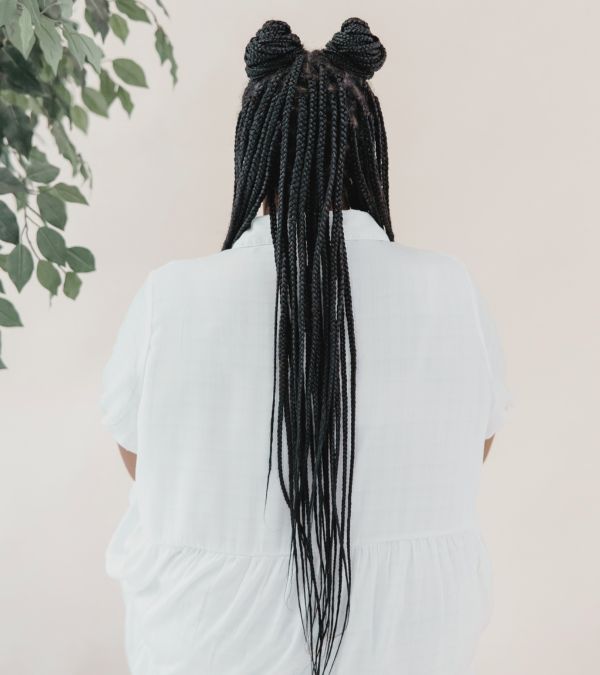
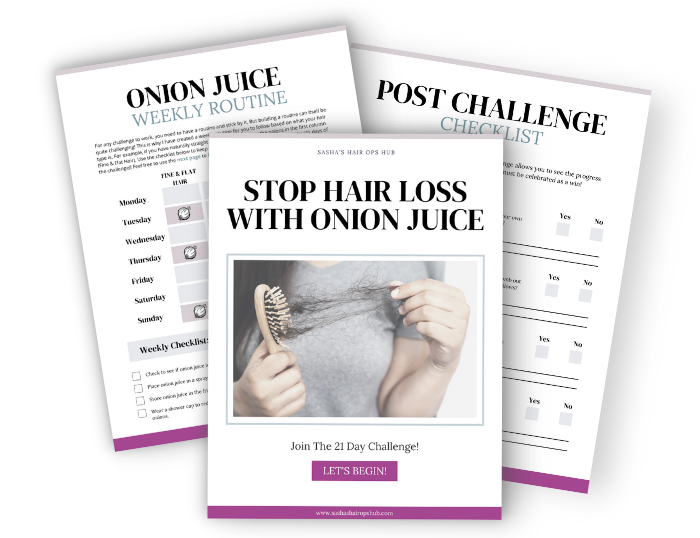


14 Responses
In general, I’ve never worn those tight buns at the top of my head or tight pulled back corn rows or braids. Just the thought of pulling my hair back so tightly would cause me headaches. I usually wear my hair down or I have a ponytail at the nape of my neck. I don’t like to cause pressure on my scalp because it gives me headaches. Although I like those braids you can get at the beach it isn’t worth the pain. If I’d get them I would just get a few, like one or two braids, but not braid all my hair.
That’s great to hear Christine 🙂 I wish I was as sane as you in my earlier years haha. I wore my hair in a tight bun at the top of my head almost every day for years! Oh well, now I know better lol. Thanks for stopping by again!
Hi Sasha, Wonderful and interesting article again. I have never worn braids because they don’t suit me or my fashion style. But I have to tighten my hair for my job as a nurse. Wearing them loose is not an option due to the disturbance they cause while working with ill people. So I need to wear them in a knot or tighten them with a rubber band. But I have never observed that I lose more hair because of this. Wearing my hair loose is also something I do when I don’t work. I love the style; even though my hair is thin.
I have read so many helpful articles on your site and followed most of your hair advice. For example, I don’t dry my hair anymore with a dryer, but let them dry on air naturally. Also, I try not to dry them with a normal towel to prevent hair breakage, and I already am seeing results. Thank you very much, Sasha! I am very thankful for all your tips. 🙂
It means so much Sylvia that my tips have helped you thus far! I try to mainly suggest what has worked for me with my hair in hopes of helping others who happen to be in the same boat as me. So it means the world to know that I am making somewhat of an impact 🙂
I can totally relate with you about keeping hair tied in a knot at work. I did the same thing for many many years as well. But try to wear it down as soon as you come back home from work so your scalp can ease out a bit from being tensed all day in a tight hairstyle. Or if you still prefer to wear it tied at home (like I do), try wearing it in a low pony at the back of your head (not the top of your head) or even a loose bun at the low back of your head. Hope this makes sense and helps a bit! Thank you for always visiting my site and appreciating my content:)
Hey Sasha,
My sister in law has her hair in these tight braids as you mentioned and she could definitely benefit from your article and from your website too. So, I am going to share this with her! She went on vacation to Jamaica and came back with her hair in these fancy braids just like you talk about! I had no idea how much effect they could have on hair. This is quite eye-opening.
Thank you for sharing and keep up the great work.
All the best,
Tom
Hey Tom! Yeah, please do share the post with your SIL. I never knew this hairstyle could have such an impact on hair either until I did the research myself! A lot of my readers were asking me if there was a connection with hairstyles and hair loss.
So glad you find this useful enough to share 🙂
Hi Sasah
Yes tight braids cause hair loss. I have noticed a few women around me have their edges thinning out and I asked one of them I was very close to why this was happening and she mentioned that few times her braids were tightly done and that caused what I saw. I know of harsh chemicals that can cause that too, we really should know the kind of stuff we put in our hair to avoid causing any damage to ourselves.
Thankfully Alopecia can be reversed depending on how severe the damage was. Thank you this very informative article. Cheers
Hey Femi, thanks for leaving your thoughts! Yup, that’s right..these braids affect the edges the first.
Glad you found this post informative 🙂
Sasha: I shared your article about braids and hair loss with my wife, who has been braiding her hair for over 10 years. Needless to say, Babe was rather alarmed by the information in your article. Lately, she has been suffering from some hair loss, but attributed to her age, but now we know the real culprit to her hair loss could be her tight braids.
Babe took your list of recommendations and posted on the refrigerator and the mirror in the bathroom. You made a positive impact on her; and definitely lit a fire under Babe about taking better care of her hair. Babe is now wearing her down or in a loose-fitting ponytail and its a new look; and it looks good! Thanks for your well written and informative article about braids and hair loss, you now have one new follower in my wife.
It is soo cute that you referred to your wife as “babe” the entire comment!! <3
Anyways, so glad you find my post useful enough to share with your wife and that she is also finding it helpful!
Thanks for letting me know, Terry! 🙂
You know what? I was just wondering if certain braids affect hair loss as I have been seeing so many women wearing braids from a little age. And even teaching their little ones to do the same. I am quite confused why would someone do that to themselves? Anyways, I know the braids are beautifully styled hair, and I love when I have them once in a while. But let me tell you! Biotin 10 000 mg is a great solution for hair health too. You might want to suggest that to your readers. Trust me you will be amazed by the results!
Hey Sunny, thanks so much for your suggestion! Biotin surely helps hair health and I am actually in the process of writing about how it helps for sure, so hang tight! Will get to it 🙂
Hi, Sasha!
As strange as it may look (men aren’t supposed to be interested in women’s issues…) I enjoyed reading your post a lot.
Nowadays, more than ever, the hustle of our lives makes women (and men) choose impractical and on the go styles and I can account for it daily at home… but never thought of the disadvantages hairdos might have…
Thank you for making me aware of this nuisance.
Take care and stay safe!
No problem, Antonio- I am glad I could help create awareness! Thanks for stopping by 🙂